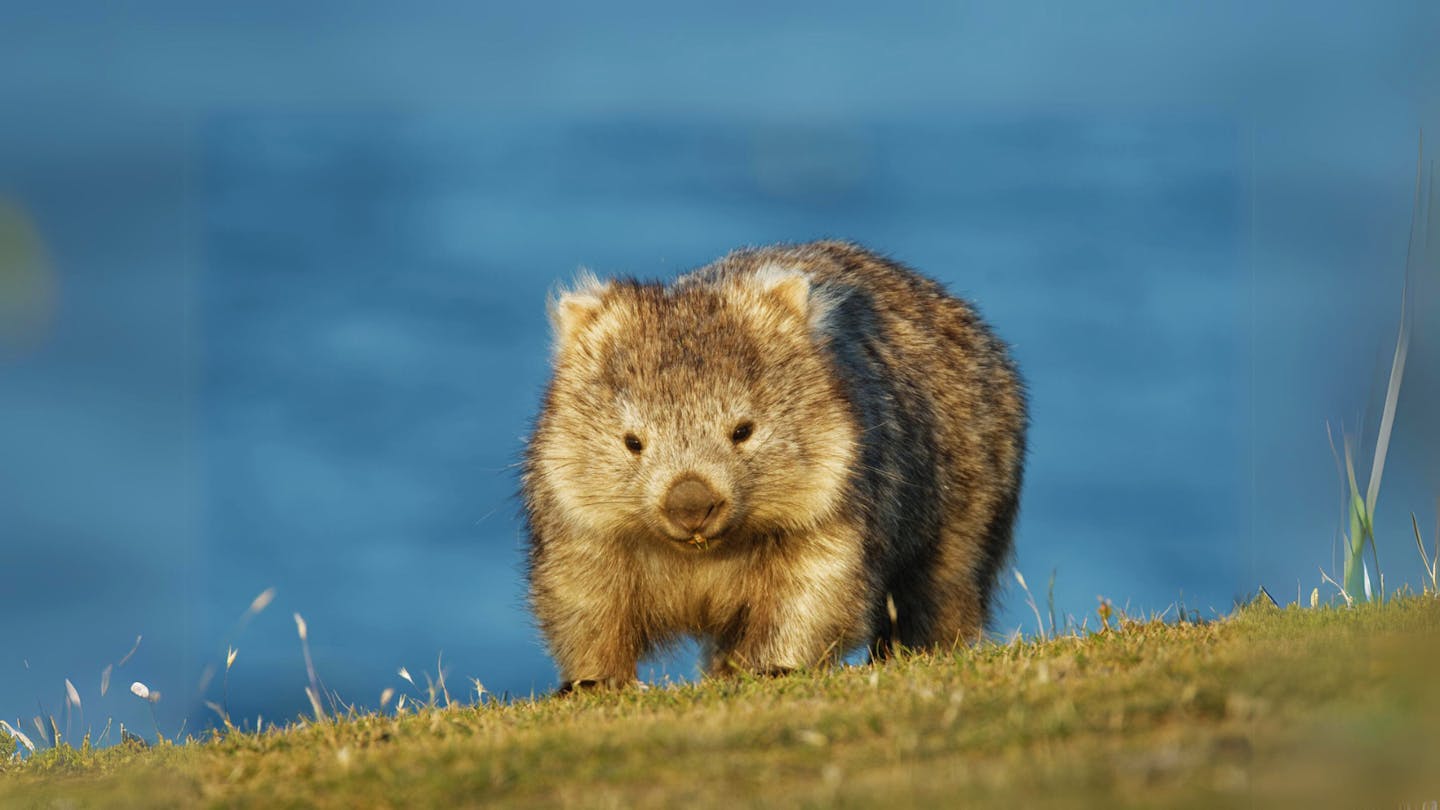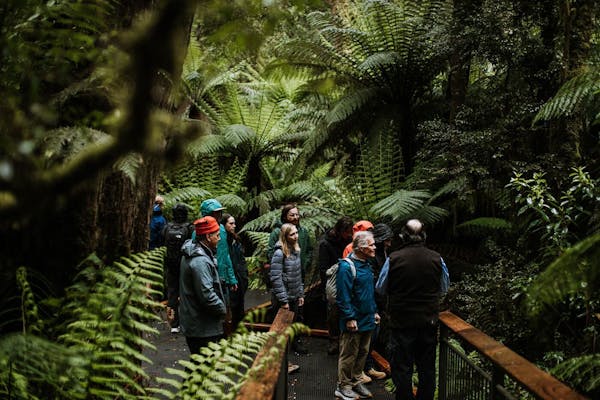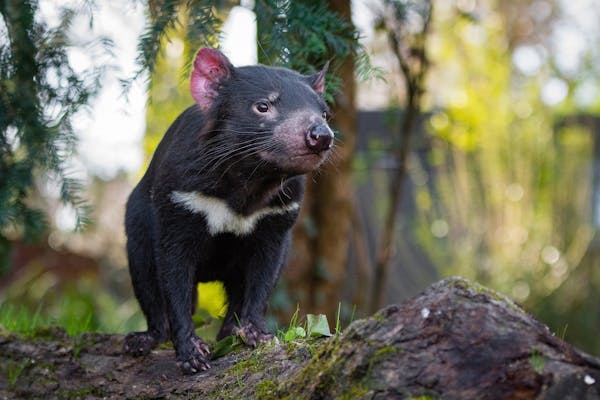Discover the remarkable world of wombats: Australia's extraordinary ecosystem engineers
Described as headstrong, playful “bulldozers of the bush,” Australia’s wombats are among the world’s most endearing and unique mammals, whose closest relatives are koalas. In keeping with their significance to the continent’s Indigenous peoples, a group of these remarkably large-brained marsupials is known as a 'wisdom' of wombats.
Meet the three fascinating species of wombats
There are three types of wombats in the family Vombatidae:
Common wombat (Vombatus ursinus)
Also known as the bare-nosed wombat, the common wombat has coarse brown fur, short, round ears, and a pointed nose. Subspecies are the mainland, Tasmanian, and Flinders Island wombats. Their front paws are dexterous and hand-like, enabling them to feed themselves by grasping vegetation with their front paws and enabling them to climb, unlike their hairy-nosed relatives.
Southern hairy-nosed wombat (Lasiorhinus latifrons)
With soft fur, large ears, a broad hairy nose, and a white patch on the nose and chest, the southern hairy-nosed wombat is the smallest of the three species. They live in semiarid scrub from the eastern Nullarbor Plain to the border area of New South Wales.
Northern hairy-nosed wombat (Lasiorhinus krefftii)
Also known as the yaminon, the northern hairy-nosed wombat is the largest and rarest of the three species, growing up to a meter long and weighing up to 35 kilograms. They have broad muzzles fringed with fine whiskers, long pointed ears, and a soft grayish color. Females are larger than the males.
While they are by far the longest-lived of the three species at up to 30 years (the others’ life expectancy is 15 years), sadly, these wombats are on the IUCN’s Red List as one of the world’s most critically endangered species. Only about 400 remain in the Deniliquin area of NSW, Moonie River in southern Queensland, and Epping Forest National Park in central Queensland.

Common wombat (Vombatus ursinus). Image credit: Getty Images via Canva Pro | Southern hairy-nosed wombat (Lasiorhinus latifrons). Image credit: Craig RJD, Getty Images via Canva Pro | Northern hairy-nosed wombat (Lasiorhinus krefftii). Image credit: Animalia.bio
The extinct Diprotodon: Australia's giant wombat of the Pleistocene
During the Pleistocene, there was also a giant wombat called the Diprotodon which was the size of a rhinoceros. (Imagine the habitat impact of “bulldozers” this size!) But as with most of the world’s megafauna, this species was hunted to extinction—in this case, by the ancestors of Australia’s Aboriginal people, whose arrival on the continent had recently preceded the Diprotodon's extinction 46,000 years ago.
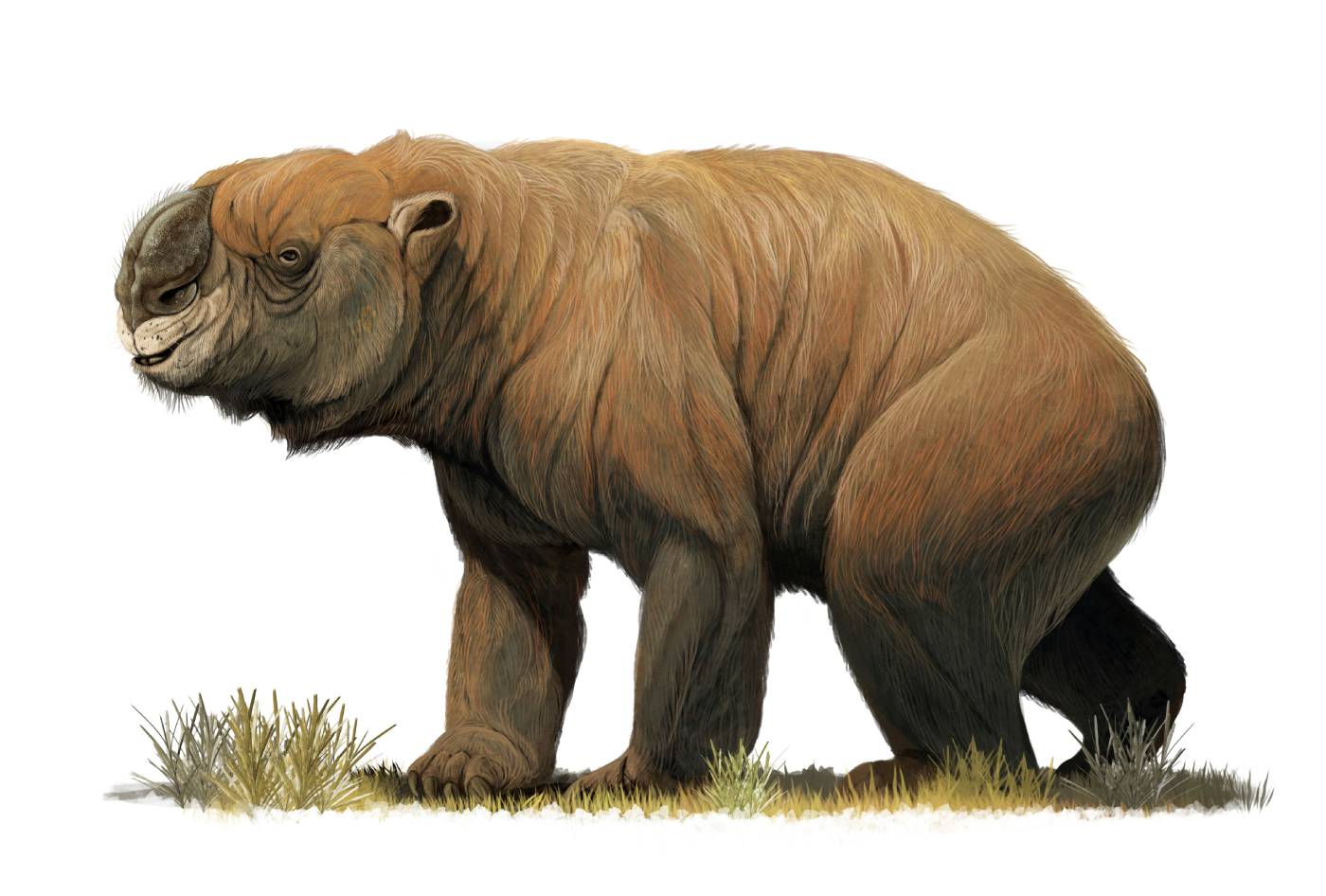
Illustration of the Diprotodon. Image Credit: Stocktrek Images, Inc. | Alamy Stock Photo.
Thriving in the Outback's harsh conditions
Endemic to Australia, wombats are uniquely adapted to its rugged landscapes, where they live in the grassy plains, scrublands, and eucalyptus forests.
The Australian climate presents daunting challenges, from scorching heat to bushfires, yet wombats have evolved to thrive in an often harsh environment. Their thick fur provides insulation, while their efficient digestive system allows them to extract maximum nutrients from sparse, tough vegetation.
The northern hairy-nosed wombat is accustomed to climate extremes, in which temperatures can fall below 0° Celsius (32 °F) and summer temperatures frequently exceed 40° Celsius (104 °F).
Masters of burrowing and adaptation
Wombats are the world's largest burrowing animals and the second-largest marsupials, next to the kangaroo. The three species of wombat share muscular, barrel-shaped bodies, short, stubby legs and vestigial tails. Formidable diggers, their wide, powerful feet with long claws enable them to excavate extensive systems of tunnels and chambers with speed and precision. These provide shelter from predators and extreme weather conditions.

A common wombat resting in a burrow. Image credit: © Cherrymnitan | Dreamstime
Wombat senses and social structures
While they have small eyes and poor eyesight, wombats have a keen sense of smell, excellent hearing, and are able to detect even slight ground vibrations. Their brains are quite convoluted and large relative to their bodies, which are signs of high intelligence. This is usually an indicator of complex social systems, though a great deal remains to be learned about the wombats’ subterranean lives.
The southern hairy-nosed species is gregarious and may share a warren of connected burrows with a dozen other wombats. Although bare-nosed wombats will share trails, rubbing posts and feeding areas, they prefer solitude.
Nocturnal foragers with unique digestive systems
Spending most of the day in the relative cool and humidity of their elaborate tunnels, which can descend to four meters, these mainly crepuscular (twilight) and nocturnal animals spend their nights foraging for grasses, sedges, roots, herbs, and bark. They use their keen sense of smell to find food in the darkness.
Their teeth are well-adapted to eating tough vegetation, with incisors that are constantly growing, like those of rodents. With their unusually slow metabolism and fermentation in their diverse microbiome, wombats can take up to two weeks to digest their meals—another evolutionary advantage in a harsh and arid climate.
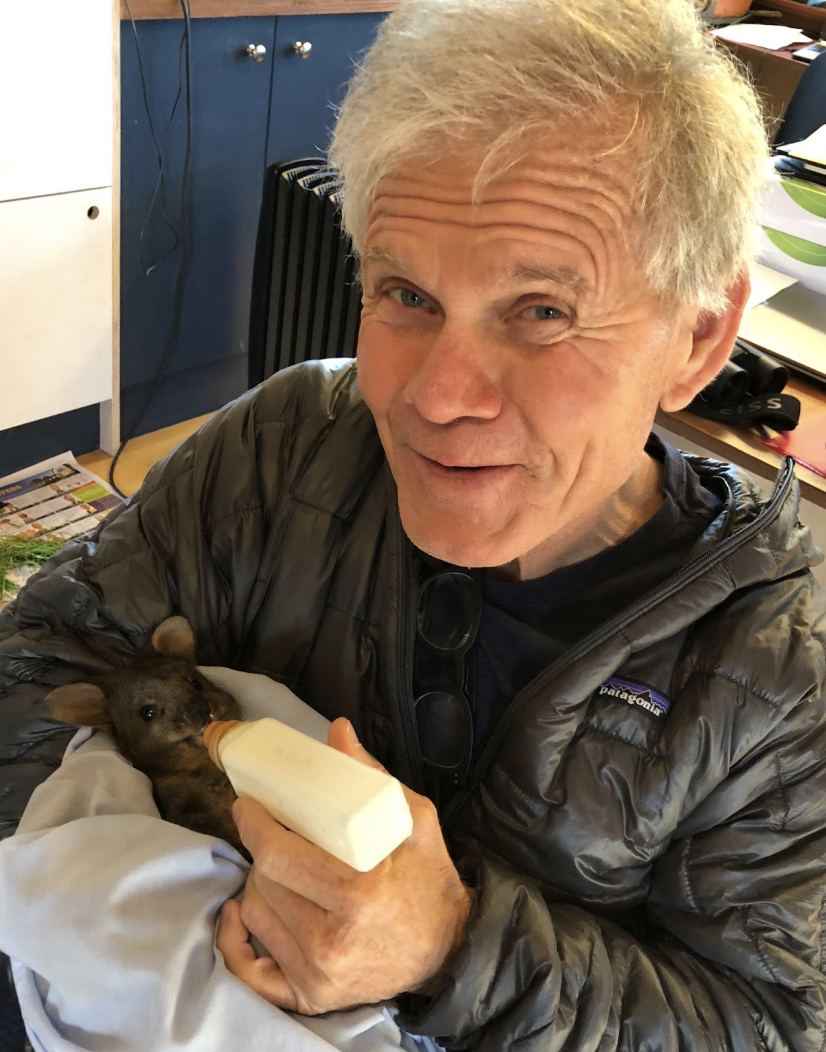
One Earth Board Member Rick Ridgeway feeds a baby bare-nosed wombat in Tasmania. Image credit: Shannon Bourke
Marsupial motherhood and development stages
Unlike other marsupials, a wombat mother has a pouch that’s positioned rearward, opening towards her rump rather than her head. This prevents dirt from getting into the gestational pouch while she’s digging.
After a period of about three weeks, a single infant joey, the size of a jelly bean, is born in the spring. The mother’s two teats swell around the joey’s mouth, fastening it there to prevent it from falling out of the pouch, which the young leave after six to nine months depending on the species.
This is followed by a period of a half year or so during which the young wombat stays close to its mother. The young are weaned after 15 months, and reach sexual maturity at 18 months to two and a half years; again, depending on the species (the higher numbers correlating with the larger northern hairy-nosed wombat).
Female northern hairy-nosed wombats usually undertake long-distance dispersal (leaving their birthplace) at least once in their lifetimes. In most mammal species, this instinct to avoid inbreeding is undertaken by young males. Females are thought to leave in order to leave the burrow to their young.
Territorial with impressive speed and clever defense mechanisms
Wombats are very territorial creatures who can be quite aggressive in defense of their burrows; a charge can bowl over a human. Despite their pudgy, badger-like appearance and waddle, wombats can run an amazing 40 kilometers per hour (25 mph)!
A primary defense is the very tough cartilage of their rear hide. When threatened by predators, wombats will dive headfirst into a tunnel and block the entrance with their rumps, which are difficult to grab. Wombats are also known to allow an intruder’s heads to enter, only to crush it against the roof of the tunnel with a powerful two-legged kick.
The science behind their notorious cubic poop
Wombats leave frequent, uniquely-shaped poops to mark their boundaries. The bare-nosed wombat is the only animal in the world that poops in the form of a cube, squeezing nearly 100 six-sided droppings out of a round anus daily.
This ability has long mystified scientists, but researchers have recently uncovered how the wombat intestine and special butt bones allow them to form their feces into this special shape. Their findings are shared in an article aptly titled Soft Matter published in the Royal Society of Chemistry’s journal.
Co-author David Hu speculated that because the animals climb up on rocks and logs to mark their territory, flat-sided feces aren't as likely to roll off from these high perches. Hu admits that their scientific revelation is “not going to replace the way we manufacture plastic,” but says “the wombat's strategy could help engineers design better ways to shape valuable or sensitive materials.”
However, research on cubic poops has been useful in providing criteria with which to assess the health of captive wombats and guide their care, as the feces of captive wombats aren’t always as cubic as those of healthier ones. Apparently, the more square the poop, the healthier the wombat.

Cubic wombat droppings, Cradle Mountain in Lake St. Clair National Park, Tasmania, Australia. Image credit: © Oliver Held | Dreamstime
Ecosystem engineers and environmental stewards
Wombats are essential contributors to ecosystem balance and health in the Australian wilderness, for in addition to their role as herbivores, they play a crucial role as ecosystem engineers. By digging burrows, they aerate the soil and increase water penetration and nutrient turnover. They also create habitats for a variety of other species, including insects, reptiles, and small mammals.
Their burrowing helps to prevent soil erosion and mitigate the spread of wildfires, as these underground tunnels act as natural firebreaks while also providing wildfire refuge for many other species. In addition, wombats contribute to carbon sequestration by burying organic matter deep within the soil as they burrow.
Wombats share with many other animals a vital role in dispersing fungal spores and seeds, while their dung fertilizes the soil, providing a valuable source of plant nutrients.
Significance in Australian culture and mythology
In Indigenous Australian cultures, wombats are valued as a food source and symbols of wisdom, resourcefulness, and close connection to the land. They’re traditionally believed to possess supernatural powers, and are revered as guardians of sacred sites. In Aboriginal Dreaming stories, wombats appear as creators or tricksters who impart valuable lessons to those who are wise enough to heed them.
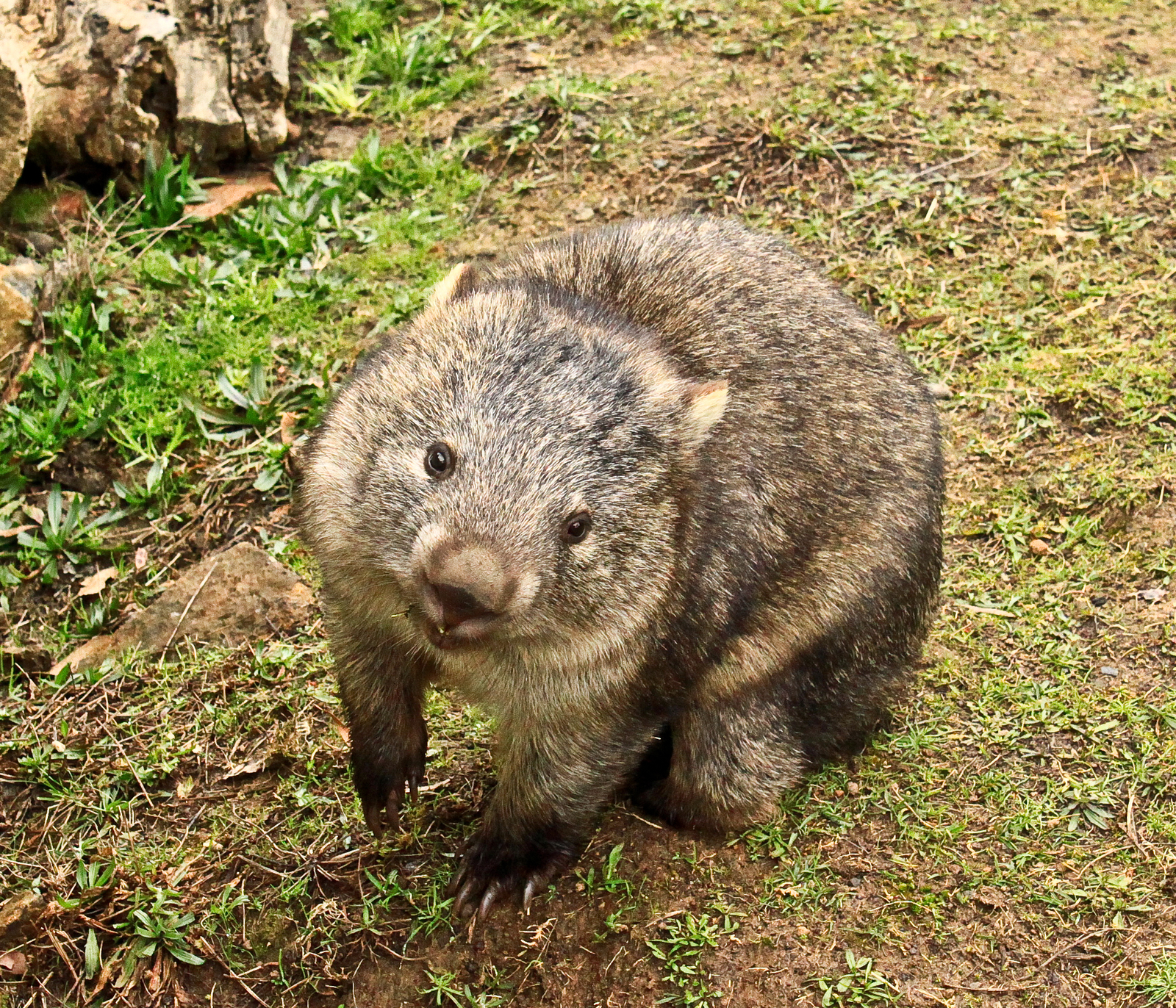
A cute and smiling common wombat on grass in Tasmania, Australia. Image credit: © Oll230 | Dreamstime
Threats and challenges to survival
In keeping with a theme common to iconic vanishing species, humans are wombats’ greatest enemies. Significant threats to their long-term survival include destruction of their natural habitats caused by urbanization, agriculture, and mining. Hunting, trapping, poisoning, and motor vehicle collisions have also severely reduced or eliminated their populations in different regions.
Competition for grass and browse with introduced species such as cattle, sheep, goats and rabbits in regions susceptible to drought has also taken a severe toll—particularly among northern hairy-nosed wombats. Cattle also collapse wombat burrows.
Their natural predators are dingoes and Tasmanian devils, with eagles, owls, and Eastern quolls (an Australian marsupial “cat”) presenting a threat to young wombats. But wombats are extremely vulnerable to predation by introduced species such as foxes, dogs, and feral cats (which also spread disease), which have decimated populations in some areas.
Climate change presents another major challenge, as rising temperatures, drought and altered rain patterns are making wombat habitats increasingly inhospitable, creating conditions that make their search for food and shelter even more difficult.
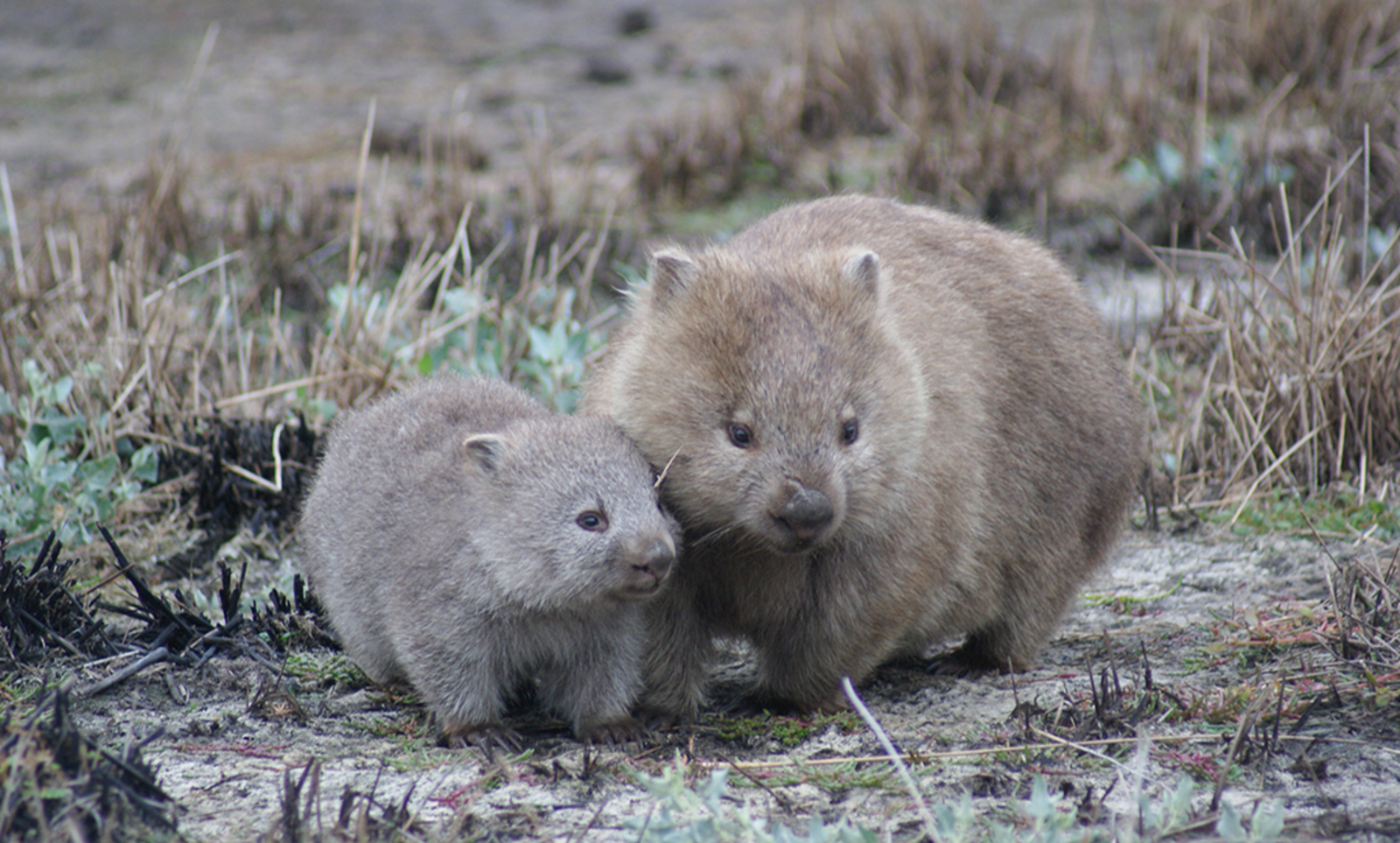
A common wombat mother and her joey. Image Credit: YANG ET AL. 2021.
Conservation efforts and protections for wombats
The numbers of all wombat species are in decline, and they are now legally protected in all of Australia. The exception is in Eastern Victoria, where farmers were allowed to kill thousands as “vermin” because of pasture and fence damage. While this loophole has recently been closed, and farmers must obtain permits by demonstrating need, it’s estimated that thousands of wombats are still killed illegally every year.
Coexistence with agriculture has been encouraged through solutions offered by exclusion fencing and special wombat swing gates to prevent fence destruction, though these have acted as barricades to other species such as wallabies.
The northern hairy-nosed wombats are fully and carefully protected, as they’re among the world’s rarest and most threatened mammals. In the 1980s, there were just 35 individuals left in only one place, prompting the species to be added to the IUCN Red List of critically endangered species.
Improved conservation measures and such organizations as The Wombat Foundation and Wombat Protection Society have led to growth in wombat numbers, though predation has continued to be a serious problem. With the protection of a predator-proof fence and the provision of supplementary feed and water, numbers of northern hairy-nosed wombats have grown significantly.
In 2009, the first of these wombats were relocated to a new site within their historic range. To reduce the risk of extinction if disease, fire or flood were to sweep through a single population of the species, a second refuge was created at the Richard Underwood Nature Refuge near St George in southern Queensland. The 2022 Recovery Action Plan envisions improving this species’ conservation status by continuing to increase the size and number of existing sub-populations.
Through support of conservation efforts and policies that prioritize habitat protection, coexistence measures, the management of invasive and domestic species, and raising public awareness of their national wildlife treasures, Australians will ensure that the unique and wonderful wombats of all species are once again able to thrive in the wild.
Support Nature Conservation